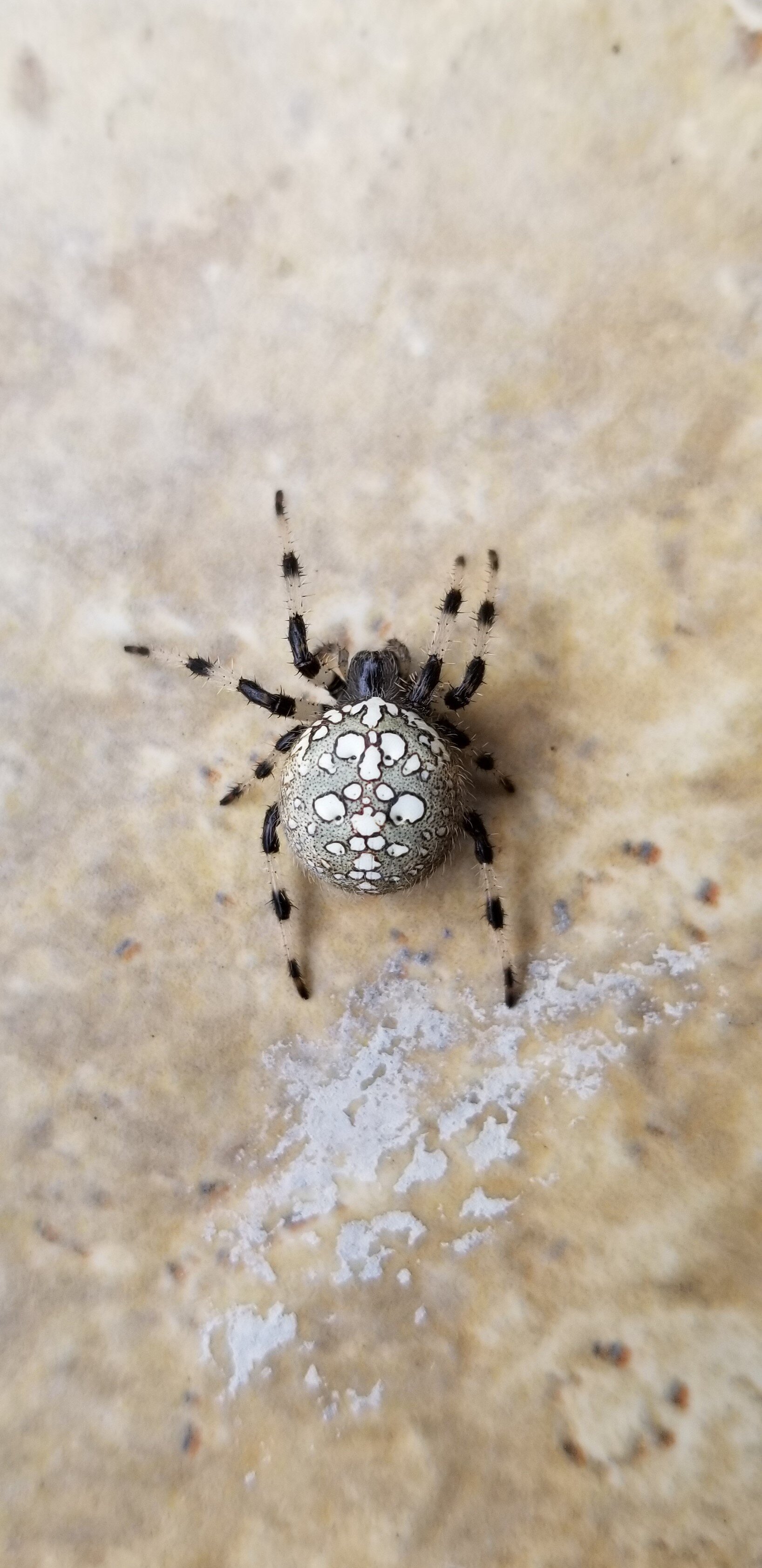Meet the Shamrock Orb Weaver
Paulette Greenberg, Anoka County Extension Master Gardener Intern
Last summer I harvested some ridiculously leafy and large pineapple sage that had gone rogue in my vegetable garden. As I was pruning the stems in my kitchen, a large spider plopped out of the leaves and landed on my cutting board. Normally I am a calm person who loves bugs and spiders, but even I was taken aback, stifling the urge to smash it with the nearest blunt object. I am so glad I calmed my inner ‘eek’ and instead, trapped it under a glass so I could photograph and research it. My visitor was an unusual one that most gardeners do not get to see up close – the shamrock orbweaver (Araneus trifolium).
Orb weavers in general are a common sight in Minnesota gardens. In fact, we are home to several species of them; they get their name for their bulbous abdomens and they come in a variety of colors and sizes. They are harmless to humans but are a gardener’s helper, as they have voracious appetites for garden pests. Morning is usually the best time to see them in action as they are busy eating their old web and spinning a new one. Most orb weavers sit in the middle of their webs awaiting their prey, but this species sometimes hides out in leaves, which is likely how she ended up in my kitchen.
I knew I had an orb weaver, but not much else. I dutifully logged my find in the iNaturalist app, and later a spider expert from the Minnesota Spider Project identified her as a shamrock and noted my entry was their first confirmed sighting in Anoka County. It is likely many Anoka County gardeners have these beauties in their flower and vegetable bed, as it is a common spider, but because they are reclusive they are difficult to spot unless you happen to see their large, circular webs. They also prefer a bit of humidity, so my overgrown canopy of sage leaves and cucumber vines provided a perfect hideout for one.
Orb weavers are not poisonous to humans and are docile when you do come across one, but it is best to leave them on their web when possible, as they do not have good eyesight and the ground is a dangerous place for them.
My shamrock orbweaver ended up back in her pineapple sage jungle. I call her a ‘she’ because of her size. Females are larger than males, and this one was close to an inch. I like to think she happily spun her silk and laid a big batch of eggs that hatched last fall. However, some eggs hatch in the spring. With this in mind, I made sure to leave most of the vegetation in my garden intact until the warmer days of May, just in case. I will be looking out for her descendants this summer.
You can learn more about orbweavers and other spiders here: https://extension.umn.edu/insect-relatives/spiders#web-building-spiders-52360
More on the shamrock orbweaver: http://www.minnesotaseasons.com/Arachnids/shamrock_orbweaver.html
https://www.insectidentification.org/insect-description.asp?identification=Shamrock-Spider

